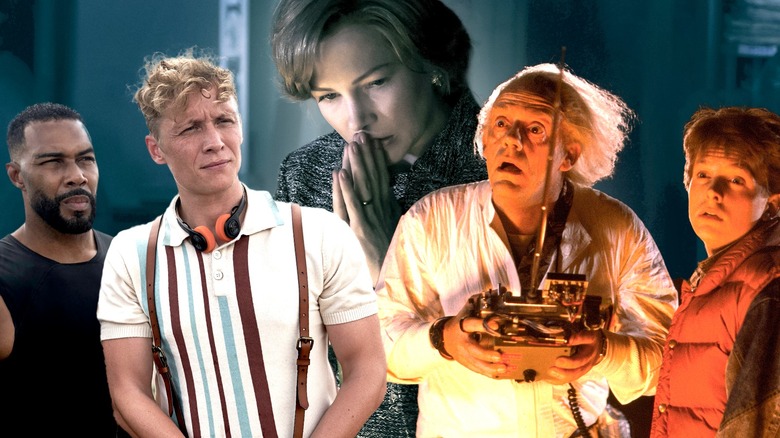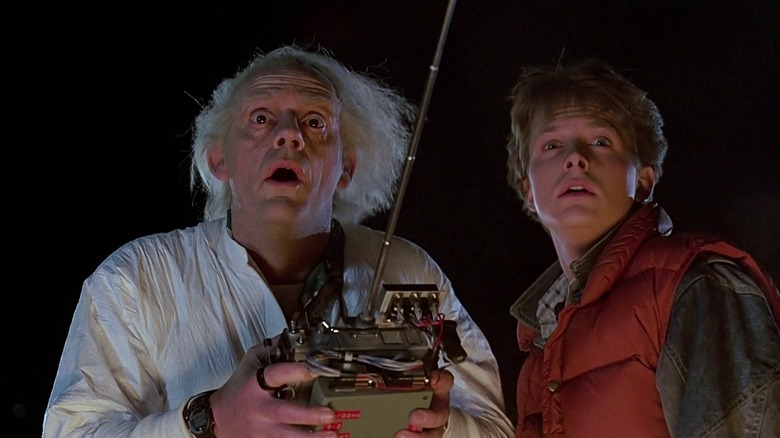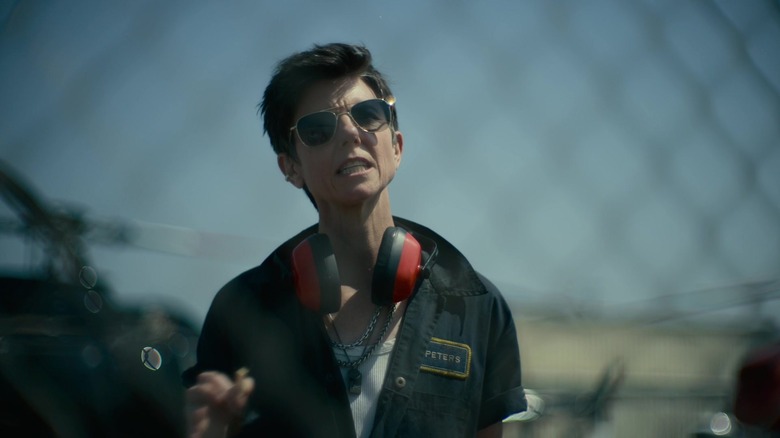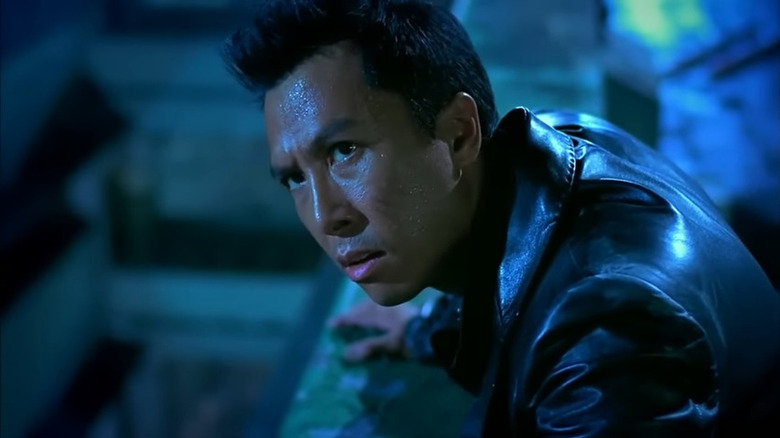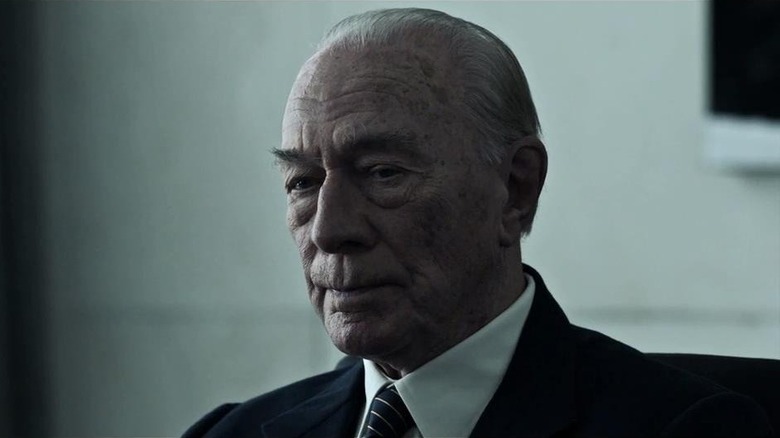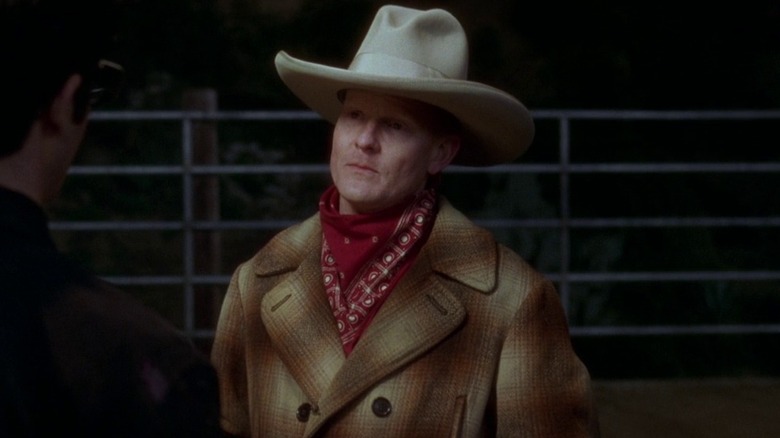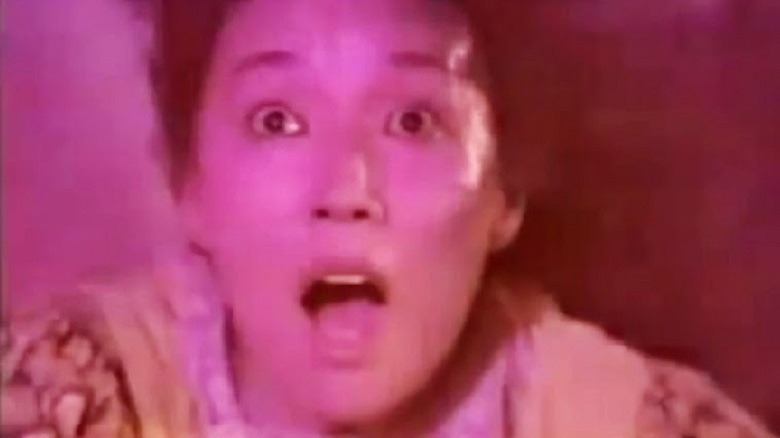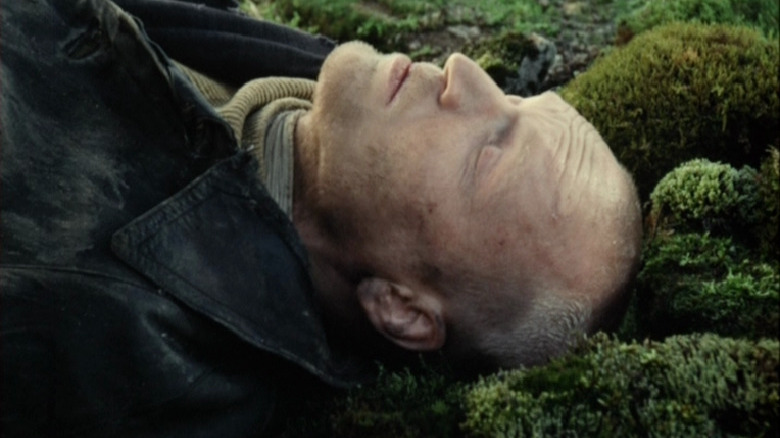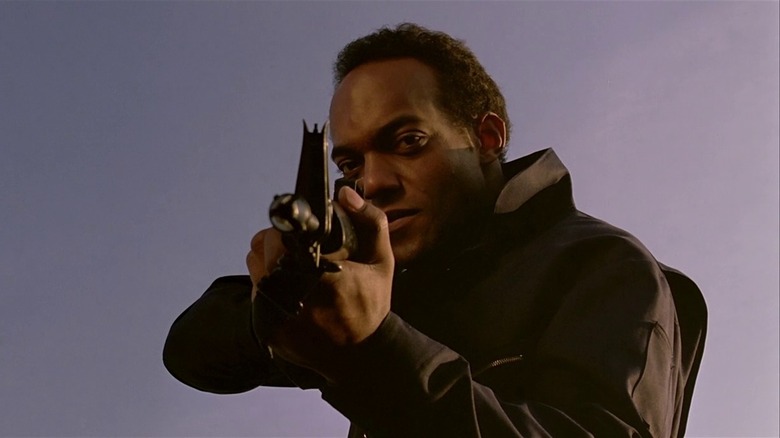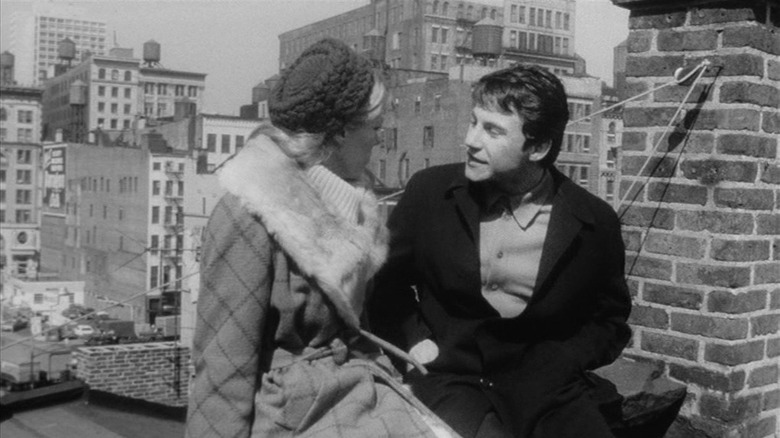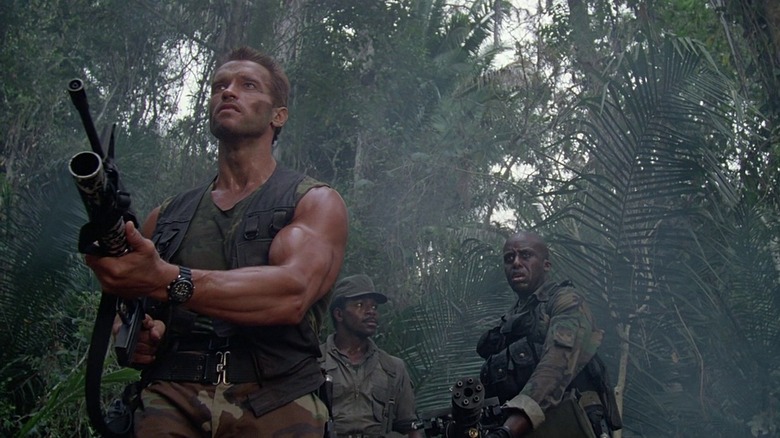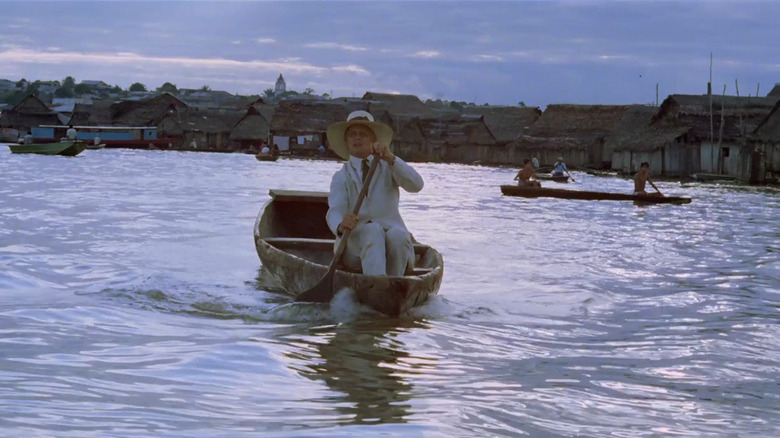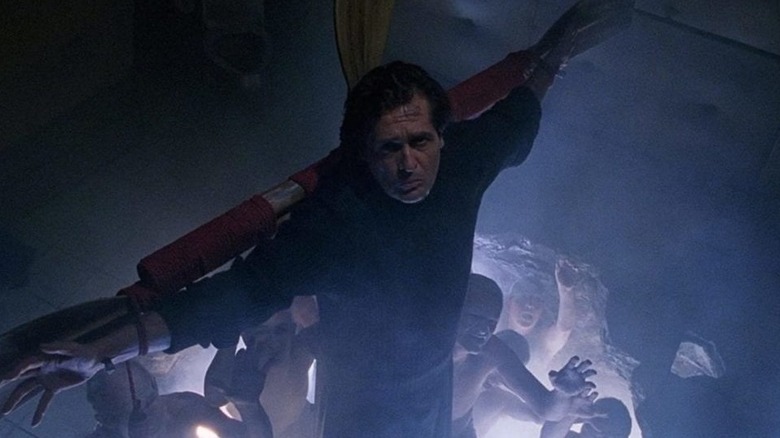12 Movies That Were Saved By Reshoots
In the world of cinema, "reshoots" can sometimes come across as a dirty word, but is this entirely fair? The bad reputation of reshoots does have some basis in truth. Plenty of movies have been hamstrung or outright ruined by studio-mandated reshoots, and news of extensive reshoots on a blockbuster can sometimes be a red flag of a troubled production.
On the other hand, disaster is sensational, and the general public tends to only hear about the worst-case-scenario reshoots. Reshoots that destroy movies make for attention-grabbing stories, but positive reshoots often have their praises left unsung. The truth is that reshoots are an extremely common occurrence in the film industry. A film having reshoots does not necessarily need to be a warning sign and could instead be taken as a sign that the people behind the production care enough to improve or fix potential problems ahead of release.
Reshoots can make matters better or worse, but a studio movie going through the process is nothing more than business as usual. In the most crucial of cases, a potential failure can be salvaged or a great movie can be allowed to reach its full potential through this process of revision. Here are 12 movies that capitalized on their second chances and were saved by reshoots.
Back to the Future
Before Michael J. Fox landed his most iconic role as Marty McFly, the character was nearly played by a different actor. Eric Stoltz was the first man cast to play McFly, and he made it deep into principal photography before being replaced. Just like Fox, Stoltz was early in his career. His breakout role was in "Mask" in 1985, but that film had yet to be released at the time "Back to the Future" was made.
The issue with Stoltz in the role was partially tonal and partially interpersonal. He didn't really get the humor of the script and instead played it too heavy and intense. His method acting approach also got on the nerves of some of the people on set, especially Tom Wilson who played Biff, and he was ready to fight Stoltz for real. Stoltz made it through a significant percentage of the film before getting the ax.
Director Robert Zemeckis knew that his star needed to be replaced, but the entire cast and crew kept shooting with Stoltz for a period of time anyway until Fox was ready to take over. When the switch finally happened, all of the scenes they had already shot with Stoltz needed to be reshot. The extra time, money, and effort spent redoing this major chunk of the production paid off as "Back to the Future" went on to become an all-time classic, and Fox's funny and charismatic lead performance is a key reason for that success.
Army of the Dead
At one point, comedian Chris D'Elia was meant to play a substantial role in Zack Snyder's 2021 Netflix original zombie movie "Army of the Dead." D'Elia had done plenty of acting on the small and big screens, but "Army of the Dead" was set to become his largest film role by far. D'Elia made it all the way through production and wrapped shooting on his scenes, but it was while the film was in post-production that his presence was rethought by the folks in charge.
Between the time the movie was shot and when it was released, D'Elia became the subject of numerous sexual misconduct allegations (per Rolling Stone). Rather than staying the course and releasing the film with D'Elia in it, Snyder and Netflix jointly decided to replace him, spending millions of dollars in the process.
Comedian Tig Notaro was brought in for reshoots to take over the role. Rather than bringing the whole cast back and reshooting everything, Notaro's scenes were largely shot solo on greenscreen. Through complex editing and VFX, Notaro was then comped into the pre-existing footage with the rest of the cast, taking D'Elia's place. Not only was this a respectable move in light of the extra overhead and a smart way to avoid the elephant in the room, but it was also an unabated upgrade across the board with many viewers pointing to Notaro as the highlight of the film.
If you or anyone you know has been a victim of sexual assault, help is available. Visit the Rape, Abuse & Incest National Network website or contact RAINN's National Helpline at 1-800-656-HOPE (4673).
Kill Zone
"Kill Zone" is a 2005 action movie starring Donnie Yen, Simon Yam, Jing Wu, and Sammo Hung. The only problem was that the first cut of the movie didn't have any action in it. Originally, "Kill Zone" would have been a straightforward cop thriller about two police officers who attempt to take down a crime kingpin. There were a few moments of violence but no full-on fight scenes — despite the presence of multiple legendary martial artists in the cast.
When Yen watched the first cut of the film, he realized that audiences would be left disappointed by the lack of action. In a behind-the-scenes featurette for the film, Yen said, "In the original script, there wasn't any hand-to-hand combat. It was after the first cut that then I realized that we needed a couple of these really solid back-to-the-basics hand-to-hand combat fight scenes." Yen went to the film's producer and secured additional funding, which he used to inject some action into the plot.
With the permission of "Kill Zone" director Wilson Yip, Yen conceived of and directed two big fight sequences for his character: the lightning-fast knife vs. baton fight in the alleyway against Wu, and the big nightclub finale fight against Hung. Even though they didn't exist in the original edit, these two action sequences are the clear highlight of the entire film and salvage an otherwise dull and cliché cop thriller. The sequel, "Kill Zone 2," embraced what was learned through the reshoots and focused more on the action from the get-go.
All the Money in the World
Ridley Scott's 2017 crime drama "All the Money in the World" tells the true story of a kidnapping and ransom involving the extremely wealthy Getty family. The film was shot and completed with Kevin Spacey in the major role of J. Paul Getty, the billionaire head of the family who refuses to pay the ransom on his grandson's head despite it being well within his means. Between shooting the film and releasing it, Kevin Spacey was outed as a sexual predator as part of the #MeToo movement (per The Cut).
Upon hearing the news, Scott made the executive decision to take Spacey out of the picture. The role instead went to Christopher Plummer, who spent nine days reshooting all of Spacey's scenes. Scott has said that Plummer was his top choice for the role to begin with and that he gave a stronger, more nuanced performance. Plummer was also the correct age for the character, whereas Spacey was aged up with prosthetics. Ousting Spacey had no creative drawbacks but it did incur the massive price tag of $10 million for the reshoots alone.
Plummer's performance wound up being the highlight of the film, and he was the recipient of the film's sole Oscar nomination. He had already been the oldest-ever Oscar winner, for his role in 2012's "Beginners," and "All the Money in the World" earned him the title of the oldest-ever Oscar nominee as well five years later.
If you or anyone you know has been a victim of sexual assault, help is available. Visit the Rape, Abuse & Incest National Network website or contact RAINN's National Helpline at 1-800-656-HOPE (4673).
Mulholland Drive
"Mulholland Drive" is one of the most highly acclaimed films from writer and director David Lynch amidst a career full of all-time great pieces of work. For as lauded as it is today, this twisted and cryptic Hollywood horror, noir, mind-melter of a story would never have seen the light of day if not for extensive reshoots.
Before "Mulholland Drive" was a feature film, Lynch first conceived of it as a television series. He wrote and directed the pilot episode, which included many of the same plot beats as the eventual film but was left open-ended to be further explored through subsequent episodes. When Lynch shopped the pilot around, he was dismayed to find that none of the networks were interested — even though he had created a TV cultural phenomenon years earlier with "Twin Peaks." After nearly giving up on the project and cutting his losses, Lynch found himself with additional funding from overseas to turn the failed pilot into a feature film instead.
He shot new scenes, reworked and reshot existing scenes, and shaped the open-ended pilot setup into something that was still far from a typical film narrative but now had a conclusive and satisfying ending. At the time, TV commonly utilized a square aspect ratio as opposed to the wider movie theater screens, drastically altering shot composition when shooting for one versus the other. This difference in medium and other stylistic alterations factored into Lynch's reshoots along with all of the narrative adjustments.
Sweet Home
"Sweet Home" is a 1989 Japanese horror film that follows a documentary crew as they explore the haunted mansion of a famous artist. Though quite obscure today, the lasting effects of "Sweet Home" on pop culture can still be felt in various properties as the inspiration behind the "Resident Evil" video game series.
Kiyoshi Kurosawa would become a highly acclaimed filmmaker later on in his career with lauded horror films like "Cure" and "Pulse," but "Sweet Home" was made earlier on in his career when he did not yet have total creative control. Producer Juzo Itami — who also played a major character in the film and was an acclaimed writer and director in his own regard — began taking more and more control of the shoot from Kurosawa. Kurosawa and Itami wanted drastically different styles and tones from the film, with Kurosawa preferring slow, creeping dread, and Itami preferring bombastic spectacle.
When Kurosawa gave up control, Itami embarked on extensive reshoots designed to make the movie more commercial and entertaining. A producer wrestling control away from a director is almost always a terrible thing, but in the case of "Sweet Home," Itami's reshoots just might have saved the film. His reshoots upped the gore and special effects several times over, and these bloody set pieces wound up being the highlights of the film.
Stalker
Russian director Andrei Tarkovsky has been hailed by many as one of, if not the single, greatest filmmaker who ever lived. Each of his feature films can be considered a towering achievement, and that holds true for his 1979 film "Stalker," which was remarkably prescient in foreshadowing the Chernobyl disaster that would follow several years later.
"Stalker" was a grueling film to make. The story of three men traveling across a harsh and unforgiving land to a fabled room that grants wishes required the cast and crew to shoot on location in dangerous spaces and in trying conditions. The film was fully shot after being in production for a year, but when the footage was developed, the results were tragic. It turned out that the entire movie had been unknowingly shot using defective film stock, which made the image much darker than it was supposed to be and tinted everything green.
This disaster forced Tarkovsky to start over from the beginning and reshoot everything. These reshoots also held terrible consequences. It is impossible to prove with absolute certainty, but it is believed that the polluted shooting environments of "Stalker" contributed to the deaths of Tarkovsky, his wife, one of the lead actors, and potentially some of the other crew members as well. It was the film's sound recordist who first presented this theory once multiple members of the crew all began dying premature deaths of the same rare illness several years down the line (per The Guardian).
Dawn of the Dead
After giving birth to the zombie genre as we know it with his 1968 classic horror film "Night of the Living Dead," director George A. Romero followed it up with "Dawn of the Dead" — released exactly one decade later. Even though Romero made multiple timeless horror hits throughout his career, he was never truly given the respect and admiration he was due by the studios during his heyday. As a result, he never had budgets large enough to properly meet his high ambitions, and "Dawn of the Dead" was another low-budget film that required every dollar to be stretched as far as possible in order to get by.
The production could not afford the time and tech necessary to review dailies during the shoot, which meant there was a notable lack of security and confidence in the footage they were capturing. Romero was forced to wait for the footage to reach the lab and be developed before he could count on it being usable. Oftentimes, reshoots were required either because of mistakes noticed in the developed footage, missing coverage that became apparent, or even because of the degradation of the celluloid due to the run-and-gun nature of the low-budget shoot. Luckily, Romero was able to capture everything he needed and another zombie classic was born.
Who's That Knocking at My Door
After going through film school and making his first couple of shorts, Martin Scorsese made his feature film directorial debut with "Who's That Knocking at My Door" in 1967. The film also doubled as the debut of star Harvey Keitel, who played a thinly-veiled surrogate for Scorsese himself in both this film and "Mean Streets." Though Scorsese would go on to become one of cinema's greatest filmmakers of all time, his first film was extremely rough around the edges — especially right after principal photography wrapped. It was clear that the film wasn't satisfactory at the time the first cut was assembled.
"Who's That Knocking at My Door" underwent multiple rounds of extensive reshoots spread across a protracted three-year timeline. The end result was still a little messy and more experimental than fans of Scorsese would come to expect, but there is merit to be found. Even after Scorsese was personally ready to put his movie out there, he still had to go through one last set of reshoots to inject nudity into the movie in order to appease his exploitation film distributor. As the film changed through reshoots, so did the title. The film started out under the name "I Call First" before being switched to "Bring on the Dancing Girls," and finally titled "Who's That Knocking at My Door." Without all those reshoots, Scorsese's legendary filmography would have gotten off to a far rockier start.
Predator
After making his feature film directorial debut with "Nomads" and before making the timeless action masterpiece "Die Hard," John McTiernan made 1987's "Predator." This tale of a group of mercenaries coming face-to-face with an alien monster in the jungle is an all-time classic of the sci-fi and action genres, but it may have been all but forgotten today if not for the major reshoots it went through.
Aside from a brief cameo in McTiernan's later "Last Action Hero," the action superstars of Jean Claude Van Damme and Arnold Schwarzenegger wouldn't end up sharing the screen together until "The Expendables 2" in 2012, but they nearly faced off in "Predator" decades earlier. Van Damme hadn't yet become a star, and he was cast as the titular Predator alien in what was essentially a stuntman role. After going partway through production on location in the jungle, it became clear that Van Damme would need to be replaced, the design of the Predator would need to be completely retooled, and everything they had shot so far involving the alien would need to be reshot.
The unintentionally goofy and extremely cumbersome costume that Van Damme had been stuffed inside of was scrapped altogether and replaced with the now-iconic Predator design by Oscar winner Stan Winston. Taking over the role of the Predator was Kevin Peter Hall, who was seven-foot-two-inches tall compared to Van Damme's five-foot-nine-inches height. Hall's extraordinary height made him an extremely intimidating figure and became a key attribute of this iconic movie character.
Fitzcarraldo
Werner Herzog's 1982 masterpiece "Fitzcarraldo" is most famous for being the movie where the director was crazy enough to drag a massive boat over the top of a mountain in the middle of a jungle for real and without any special effects. But that incredible physical achievement was far from the only difficult aspect of the production. "Fitzcarraldo" was such a trying shoot that Herzog wrote an entire book about the challenges and hardships of the production titled "Conquest of the Useless: Reflections from the Making of Fitzcarraldo."
Nearly half of the movie was shot with actor Jason Robards in the titular role. However, after contracting dysentery while shooting on location in the Amazon, Robards had to abandon the shoot. Herzog turned to his frequent collaborator Klaus Kinski to take over the role, reshoot everything they had gotten so far, and finish out the production in the face of disaster. Kinski was an extremely volatile and dangerous person on film sets, and "Fitzcarraldo" was no exception, but the resulting performance is undeniably incredible. The documentary "Burden of Dreams" contains archival footage of Robards in the role, offering viewers a glimpse of how the film may have turned out without reshoots. The Rolling Stones' frontman Mick Jagger was supposed to be in the film as well alongside Robards, but, rather than reshooting his scenes too, Herzog simply edited him out of the picture altogether.
The Exorcist III
"The Exorcist" is a genre-defining horror film from 1973 and is still often hailed as the scariest movie ever made. The original film's director William Friedkin never returned to the series, but "The Exorcist III" was in safe hands with William Peter Blatty, the first film's screenwriter and the author of the novel that served as its source material. For the second and final time in his career, Blatty jumped into the director's chair as well as again writing the adapted screenplay, this time basing it on his novel "Legion." The trouble came when Blatty and the studio disagreed over how closely the film should follow the original "The Exorcist."
Blatty's original version of "The Exorcist III" had no exorcism in the film and instead ended with Lt. Kinderman (George C. Scott) simply shooting the possessed villain with his revolver. This first version of the movie also completely lacked the participation of actor Jason Miller, who played Father Damian Karras in the first movie. At the studio's urging, Blatty reshot the film's ending to include an exorcism and reshot all of Brad Dourif's scenes so that his split-personality role could be shared with Miller. The original version worked, but the newly added exorcism is truly spectacular and helps the film live up to its title and end on a high note. Although some of the studio interference was undoubtedly frustrating, Blatty conceded that the end result was stronger after the reshoots.
